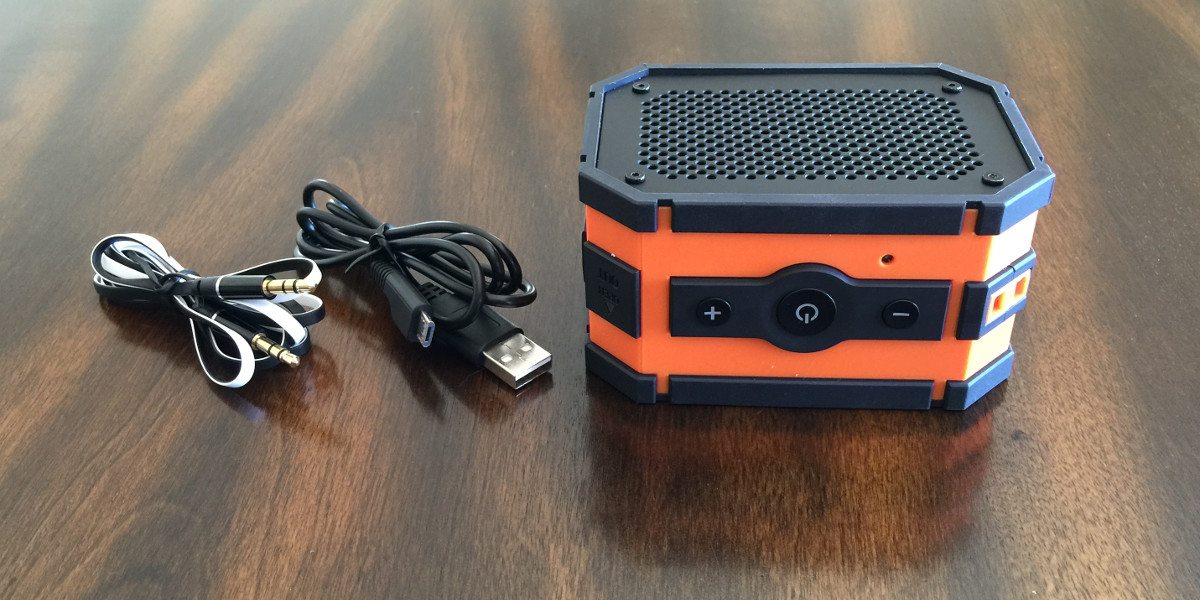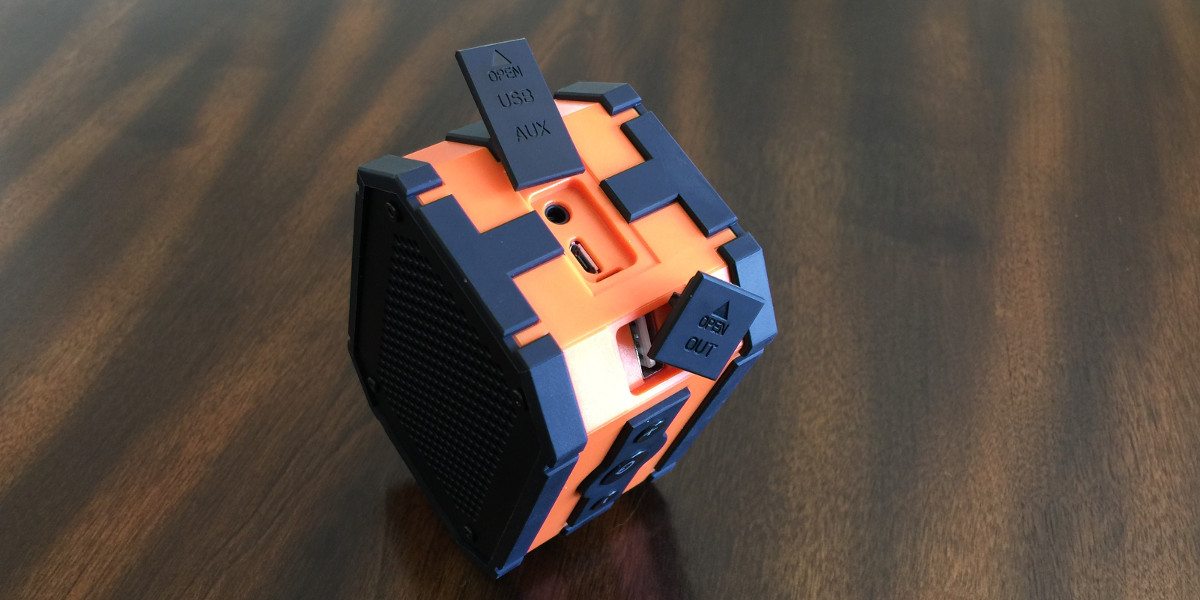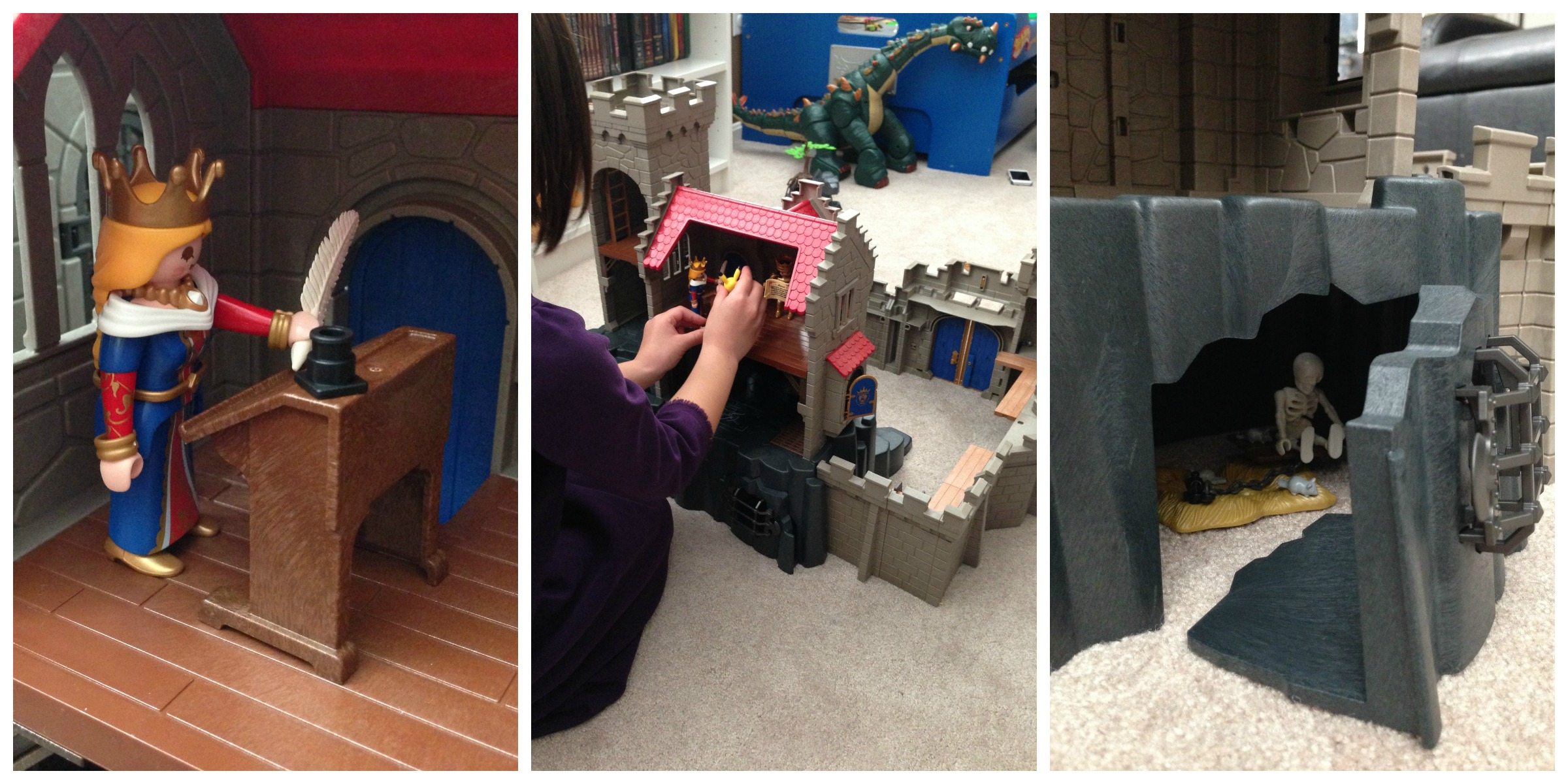
I hate wires, but I don’t like spending money on speakers. This had led to a string of Bluetooth speakers in my household that are definite underperformers. So it was with great enthusiasm that I took up MPOW’s offer to review their Armor Portable Wireless Bluetooth Speaker. Its specs boast:
- Bluetooth 4.0
- Range: up to 33 feet
- Battery life: up to 10 hours
- Waterproof Level: IP65
- USB Output for charging devices (from the 1000mAh battery)
I’ve tested the speaker now for two weeks, primarily paired with an iPhone 6+. Here’s how it fared:
What’s in the Box?
First impressions matter, and the Armor was packed nicely into a just-right box. Included are the manual, micro-USB cable (for charging), and a 1/4″ jack stereo cable. The stereo cable is well-chosen with a very low profile plug, ensuring that it can fit into your phone even through very small protective case holes. The looks seems to have been chosen to appear rugged, but I also found it fit nicely in our decor.
Sound Quality
The Armor passed what should be the most obvious test for a speaker: how does it sound? I’m no audiophile; I’m generally happy with mid-range audio equipment. With that caveat, I’m happy to say that the Armor sounded great, conveying a good sense of bass and range of sound. I was able to use it for podcasts, blast some rock, or relax to quieter tunes and enjoy all of them. It has become my speaker of choice around the house; I now use it to fill my home office with music rather than my high quality headphones on my PC.
Buttons and Ports
There are only three buttons on the Armor. The power button does multiple jobs including Bluetooth pairing as well as acting as a play/pause button. The volume buttons also jump tracks if pressed and held for about three seconds. In my use, I found all these worked well enough. However, what’s the point of having a Bluetooth device if you keep it nearby? Generally, I just used my phone to control the music.

Ports include a USB input, USB output, and stereo jack. I didn’t find any issues with connectivity of cables, but I didn’t spend significant time with the audio jack either – as with the buttons, the whole point is that it’s a wireless speaker. The ports themselves are well protected under tight-fitting rubber covers that protect the phone when exposed to water.
Range and Connectivity
Both range and connectivity are consistently the largest issues I have with Bluetooth devices. Here, the Armor fared better than any other Bluetooth product I’ve ever owned. It never once failed to connect to my phone when I turned the speaker on. It doesn’t automatically reconnect to your phone if you go out of range and return, but aside from my Pebble watch, I’ve never had a Bluetooth device that does. Range was surprisingly far: I was able to use the Armor on a different floor in my house than where the iPhone was located. While it was interrupted occasionally during transit, especially when my body was between the the two devices, once I put the speaker down on a surface in the open it played happily.
The Armor doesn’t have a microphone; you can’t use it for a phone call. This is a good design choice in my book as I’ve never seen a portable speaker do this function well. More importantly, the Armor works perfectly when a phone call comes in. My phone always took over, and when the call ended, music returned to the speaker without fail.
Battery Life
This may be a case of under-promising and over-delivering. The speaker’s specs say “up 10 hours”. In a happy surprise, this article was delayed because I could not get the Armor to run out of power. At first, I was listening to the speaker with it placed close by. After 12 hours had passed, I wanted to move on to testing the emergency charging function (which would require a full charge), so I tried to run the battery down faster. I turned up the volume and put it under a blanket. It hit 20 hours. I placed it on another floor of my house to try to make it use more energy on wireless comms. It hit 30 hours. I lost track after that, but the speaker lasted somewhere between 30 and 35 hours.
Another feature I expect from my portable devices is that they can charge while operating. The Armor had no issues here, connecting and playing music while plugged into a USB charger.
Emergency Charging
The speaker comes with an output USB port for the emergency charging of devices. I first tried it with my iPhone 6+, but could not get it to charge beyond an initial blip. After checking with MPOW, it seems that if a device draws power too quickly, the Armor shuts down to avoid damage. Connecting the Armor to a power source reset it so I could turn it on again.
Tests with an older iPhone 4S proved successful. Starting with the phone at 50% and a fully charged Armor, the phone reached 94% charge. Taking a broad brush assumption that the battery percentage charge is linear, this means the MPOW put 630mAh of power into the phone’s battery. Given that the MPOW Armor’s battery is only 1000mAh, that is good battery-to-battery charging performance and could come in useful, as long as your device doesn’t inadvertently shut down the Armor.
Waterproof Testing
The Armor is rated IP65, where the “6” refers to dust particulate penetration and the “5” is for water. I wasn’t particularly worried about dust, and I figured water would produce more immediate results, so my testing focused on water ingress.
An IP rating of 5 means that the speaker should be protected against water jets. Apparently, some reviewers saw the word “waterproof” and promptly took their speaker into the bath, with predictable results. While I’m sure the Armor will see use in camping, back yards, and near hot tubs, my immediate thought was: this may be the music-in-the-shower-speaker I’ve been wanting my whole life.
To test out the Armor’s ability to stand up to a reasonable deluge, I took it into the shower with me and put it under the secondary shower head. This should be in excess of most people’s use cases, and in line with forgetting your speaker outside in the rain. I took a delicious 20 minutes enjoying some tunes with my hygiene, and the speaker played along without any issues. The only noticeable effect of the water is that it filled the holes in the speaker grille, muffling the sound somewhat. Simply shaking out the water returned it to sounding like normal when I was done in the shower.
Bottom Line
At under $40 on Amazon (and less for Prime subscribers), the MPOW Armor already meets my target price point. But with notably good range, incredible battery life, and shower-proof as well, it has become my favorite speaker in the house. Take note of my findings on the emergency charging function, but I suspect that is a niche feature for most people. The MPOW Armor is an excellent waterproof Bluetooth speaker that you should add to your portable tech arsenal.
Disclaimer: an MPOW Armor was provided for this review.



